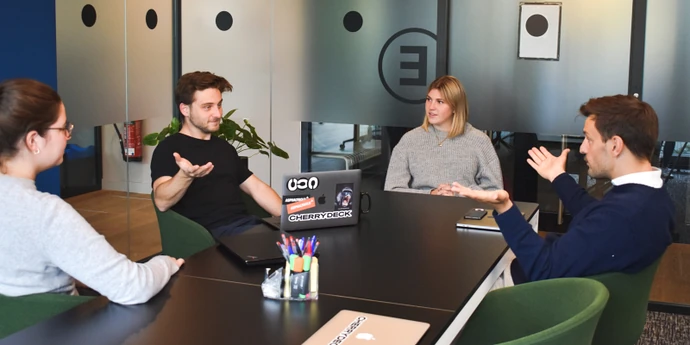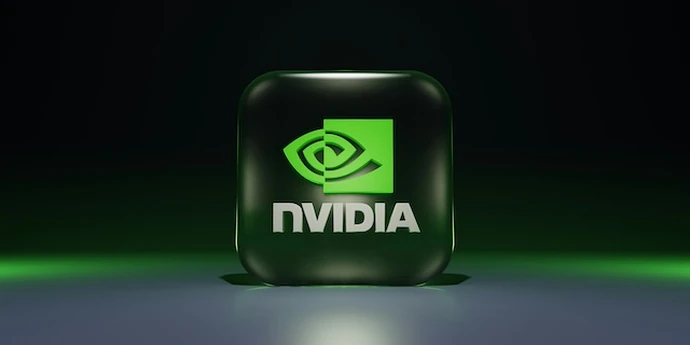If you're interviewing at a FAANG company, it's essential to practice answering typical questions beforehand.
To help you do that, we've listed real interview questions asked at Google, Meta, and Amazon in recent years along with links to written and video answers, as well as specific guides into each question type if you need to dive deeper.
Simply click on your role below and start practicing.
- FAANG interview questions for software engineers
- FAANG interview questions for product managers
- FAANG interview questions for engineering managers
- FAANG interview questions for technical program managers
- FAANG interview questions for data scientists
- FAANG interview prep
1. FAANG interview questions for software engineers
Software engineer candidates at FAANG companies have to face several rounds of interviews that include coding, system design, and behavioral questions.
Let's look at a sample of questions for each.
1.1 FAANG software engineer interview questions: coding
If you're applying to FAANG, you'll face coding problems both in the phone screen and at the onsite/final stage, where you're likely to face two 45-minute coding interviews.
They will test your knowledge of common data structures and algorithms, largely focusing on Graphs, Trees, Arrays, Strings, and Dynamic programming.
All the questions below appeared in interview reports on Glassdoor.com from software engineer candidates at Facebook (Meta), Amazon, or Google. We just added links to good solutions that we found.
Google:
- Given a binary tree, find the maximum path sum. The path may start and end at any node in the tree. (Solution)
- Given a robot cleaner in a room modeled as a grid. Each cell in the grid can be empty or blocked. The robot cleaner with 4 given APIs can move forward, turn left or turn right. Each turn it made is 90 degrees. When it tries to move into a blocked cell, its bumper sensor detects the obstacle and it stays on the current cell. Design an algorithm to clean the entire room using only the 4 given APIs shown below." (Solution)
- Given an encoded string, return its decoded string." (Solution)
- Implement a SnapshotArray that supports pre-defined interfaces (note: see link for more details). (Solution)
- In a row of dominoes,
A[i]andB[i]represent the top and bottom halves of thei-th domino. (A domino is a tile with two numbers from 1 to 6 - one on each half of the tile.) We may rotate thei-th domino, so thatA[i]andB[i]swap values. Return the minimum number of rotations so that all the values inAare the same, or all the values inBare the same. If it cannot be done, return-1. (Solution) - Given a
matrixand atarget, return the number of non-empty submatrices that sum to target.(Solution) - Given a rows x cols binary matrix filled with 0's and 1's, find the largest rectangle containing only 1's and return its area. (Solution)
- A strobogrammatic number is a number that looks the same when rotated 180 degrees (looked at upside down). Find all strobogrammatic numbers that are of length = n. (Solution)
- "A group of two or more people wants to meet and minimize the total travel distance. You are given a 2D grid of values 0 or 1, where each 1 marks the home of someone in the group. The distance is calculated using Manhattan Distance, where distance(p1, p2) =
|p2.x - p1.x| + |p2.y - p1.y|." (Solution)
Meta:
- Given an array
numsof n integers where n > 1, return an arrayoutputsuch thatoutput[i]is equal to the product of all the elements ofnumsexceptnums[i]. (Solution) - Given a string S and a string T, find the minimum window in S which will contain all the characters in T in complexity O(n). (Solution)
- Given a non-empty string
s, you may delete at most one character. Judge whether you can make it a palindrome. (Solution) - Given the
rootnode of a binary search tree, return the sum of values of all nodes with value betweenLandR(inclusive). (Solution) - Given a Binary Tree, convert it to a Circular Doubly Linked List (In-Place). (Solution)
- Serialize and deserialize a binary tree (Solution)
- Given a binary tree, find the maximum path sum. (Solution)
- Given a list of non-negative numbers and a target integer k, write a function to check if the array has a continuous subarray of size at least 2 that sums up to the multiple of k, that is, sums up to n*k where n is also an integer. (Solution)
- You are given two non-empty linked lists representing two non-negative integers. The digits are stored in reverse order and each of their nodes contains a single digit. Add the two numbers and return it as a linked list. (Solution)
- We have a list of
pointson the plane. Find theKclosest points to the origin(0, 0). (Solution) - A linked list is given such that each node contains an additional random pointer that could point to any node in the list or null. Return a deep copy of the list. (Solution)
Amazon:
- Given preorder and inorder traversal of a tree, construct the binary tree. (Solution)
- Design an algorithm to serialize and deserialize a binary tree. There is no restriction on how your serialization/deserialization algorithm should work. You just need to ensure that a binary tree can be serialized to a string and this string can be deserialized to the original tree structure." (Solution)
- Given a list of airline tickets represented by pairs of departure and arrival airports
[from, to], reconstruct the itinerary in order. All of the tickets belong to a man who departs fromJFK. Thus, the itinerary must begin withJFK." (Solution) - Given a string s, find the longest palindromic substring in s. You may assume that the maximum length of s is 1000. (Solution)
- Say you have an array for which the ith element is the price of a given stock on day i. If you were only permitted to complete at most one transaction (i.e., buy one and sell one share of the stock), design an algorithm to find the maximum profit. Note that you cannot sell a stock before you buy one. (Solution)
- Given an array of integers nums and an integer target, return indices of the two numbers such that they add up to target. You may assume that each input would have exactly one solution, and you may not use the same element twice." (Solution)
- Merge two sorted linked lists and return it as a new sorted list. The new list should be made by splicing together the nodes of the first two lists. (Solution)
- Design a stack that supports push, pop, top, and retrieving the minimum element in constant time. (Solution)
If you have an upcoming coding interview at a FAANG company, we recommend you use our Coding interview prep guide (7 steps to an offer at FAANG) as a basis for your preparation.
For more FAANG coding problems and solutions like the ones above but more comprehensive, try our guides: The Ultimate Data Structure Interview Questions List and 71 algorithm interview questions (with solutions and cheat sheet)
1.2 FAANG software engineer interview questions: system design
System design interviews at FAANG companies are notorious. The questions are challenging, open-ended, and unlike any other interview round.
Below are the most common system design questions reported on Glassdoor from Facebook (Meta), Google, and Amazon candidates. We've linked to the best free example solutions we've been able to find online.
Google:
- Design a web cache
- Design Google Maps
- Design a task-scheduling feature
- Design YouTube search
- Design Google Search
- How would you design a system for a robot to learn the layout of a room and traverse it?
- Design a distributed ID generation system
- Design the server infrastructure for GMail
Meta:
- How would you design Instagram / Instagram Stories?
- Design WhatsApp / Facebook Messenger
- Design Facebook status search or Facebook newsfeed
- Design an online collaborative editing tool
- How would you design an autocomplete service for a search engine?
- Design a file system
Amazon:
- Design a parking lot
- Design a phone billing system
- Design a TinyURL service
- Design an API that would take and organize order events from a web store
- Design a product recommendation system based on a user's purchase history
- How would you design an electronic voting system?
- Design a deck of cards
- Design a system to optimally fill a truck
- Design a warehouse system for Amazon
To practice with more system design questions, along with written answer outlines to help you learn how to approach them, see our guides: 11 most-asked system design questions and System design interview prep (7 steps to a FAANG offer)
1.3 FAANG software engineer interview questions: behavioral
To get an offer at FAANG, strong technical skills are not enough. You also need to show excellent collaboration skills and demonstrate some leadership capacity.
FAANG companies test you for these soft skills using behavioral questions. Let's take a look at some of the most frequently reported on Glassdoor.
Google:
- Tell me about yourself
- Why Google?
- Tell me about a time you failed
- Tell me about a time you had to resolve a conflict in a team
- What is your favorite Google product?
Meta:
- Tell me about yourself.
- Why Facebook/Meta?
- Tell me about a recent/favorite project and some of the difficulties you had
- Tell me about the greatest accomplishment of your career.
- Tell me about a time you had to resolve a conflict in a team
Amazon:
- Tell me about a time you had to change your approach because you were going to miss a deadline
- Tell me about a time you did something at work that wasn't your responsibility / in your job description
- Tell me about a time you had a conflict with a coworker or manager and how you approached it
- What is the most innovative idea you've ever had?
- Tell me about a project in which you had to deep dive into analysis
- Why Amazon?
To practice more typical FAANG behavioral questions and learn how best to answer them, see our guide: Software engineer behavioral questions (+ answers)
If you have a SWE interview coming up for Google, Meta, or Amazon, we strongly recommend you read one of our specific guides below. We don't yet have specific guides for Apple or Netflix but you can be assured that the question types are the same.
2. FAANG interview questions for product managers
If you're interviewing at FAANG as a PM you can expect a broad range of question types: product design, product strategy, analysis/metrics, prioritization, behavioral, and, depending on the company, estimation.
We've studied hundreds of interview reports from FAANG candidates. Below, we've listed real questions that give a very accurate representation of what you can expect.
You'll see that we've stated the company the question was asked at, but most of these questions could and have come up at any FAANG company (of course, don't expect to be asked carbon copies of the questions below, but the types of question will be similar).
2.1 Typical FAANG PM questions with written answers
Practice with this list of 11 very typical FAANG product manager questions and links to example answers and frameworks.
- Define the success metrics for Facebook feed (Meta)
- Tell me about a time you showed leadership (Amazon, Google)
- Design a pen for an astronaut (Google)
- How would you turn Facebook Events around? (Meta)
- Tell me about a time you failed (Apple)
- How would you improve Facebook? (Meta)
- Why do you want to join this company (All)
- YouTube traffic went down 5%. How would you react? (Google)
- Estimate YouTube's daily revenue (Google)
- How do you prioritize projects A, B, and C? (Meta, Amazon)
- 1. How would you design a computer keyboard?
2.2 Typical FAANG PM questions with video answers
Once you've learned the frameworks it can be useful to watch experienced PMs answer these kinds of questions, to show you what you should be aiming for.
Practice answering the questions below yourself, then see how ex-FAANG PMs answer them.
- How would you improve Google Chrome? (Google)
- Tell me a time you solved a team conflict. (Meta)
- Pick YouTube success metrics (Google)
- Estimate total time spent at stoplights each year (Google)
- Tell me about a time you struggled to meet a deadline (Amazon)
- Imagine you're the CEO of Uber. What's your 10-year strategy? (Google)
- What is your favorite product and why? (All)
- Design an app for a theme park (Google)
- Why this company? (All)
- What makes a good product manager? (Google)
To continue your PM interview prep, see our specific guide for whichever FAANG company you're applying to. You'll notice we've not yet finished creating the Netflix guide, but rest assured the questions will be fairly similar. Since some people include "Microsoft" as FAANG or "MAMAA", we've included that too:
3. FAANG interview questions for engineering managers
Engineering manager candidates at FAANG companies generally face a mix of people management, project management, fit, system design, and coding questions.
Depending on your level and company, you can expect two or even three system design interviews, though you'll probably face fewer coding questions than a regular software engineer would do (Amazon tends not to bother asking SDM candidates any coding problems).
Below we list questions reported by engineering manager candidates at Google, Meta, and Amazon across the categories of people management, project management, and behavioral/"fit".
If you're looking for system design or coding questions, use the lists above, which are equally valid for engineering managers as for software engineers (though the expectations regarding how you tackle the questions will, of course, be different).
3.1 FAANG engineering manager interview questions: people management
Google:
- How do you deal with low/high performers?
- How do you handle conflicts?
- How do you handle people who are not team players?
- Tell me about a time you developed and retained team members
- How do you set a vision for your team?
Meta:
- How do you manage your team’s career growth?
- How do you manage difficult conversations?
- How do you manage underperforming employees?
- What would you do with someone who had stayed at the same level for too long?
Amazon:
- Give an example of how you helped another employee
- How do you manage low performers?
For an overview of people management as an engineering manager and to see the types of things you should be talking about in your interview, see our specific guide: People management primer for tech interviews (competencies, questions, resources)
3.2 FAANG engineering manager interview questions: project management
Google:
- As a manager, how do you handle trade-offs?
- Describe how you deal with change management
- Describe in detail a project that failed
- Describe a project in the past that was behind schedule and provide concrete steps that you took to remedy the situation
- Tell me how you would balance engineering limitations with customer requirements
Meta:
- Describe the most technically complex project that you have worked on and why it was complex
- Describe a software development project you led and your approach
- Tell me about a project, product, or system you worked upon. What were the design and technical problems you faced? How did you solve them?
Amazon:
- What was the largest project you've executed
- Tell me about a time you needed to deliver a project on a deadline but there were multiple roadblocks and constraints to deliver. How did you manage that situation?
For more help on answering project management questions, see our related guide: Program management primer for tech interviews (competencies, questions, resources)
3.3 FAANG engineering manager interview questions: behavioral / fit
Google:
- Why are you an effective R&D leader?
- Tell me about yourself
- Why Google?
Meta:
- Why Facebook/Meta?
- Tell me about a mistake you made and the lesson you learned from it.
- Tell me about what you've been working on over the last year
- Tell me about yourself
- Why are you leaving your current job?
- How do you communicate about technical project needs with non-technical teams?
Amazon:
- When was the last time you did something innovative?
- Give an example where you failed to do the right thing
- Tell me about a time you had a conflict with your supervisor and how you resolved it
To practice more behavioral questions and to learn how best to answer them, see our specific guide to behavioral interview questions for engineers.
4. FAANG interview questions for technical program managers
FAANG companies ask technical program managers five types of questions during the interview process: program management, behavioral, technical explanation, system design, and coding (sometimes).
The questions below were asked at Meta, Amazon, or Google according to TPM interview reports on Glassdoor.com.
Program management:
- Tell me about a program or project that you managed end-to-end
- How would you manage hypothetical project XYZ (e.g. replace discs in a data center)?
- How do you structure and roll out a new service to a market?
- What are the tradeoffs of agile development?
- How do you handle a failing project?
- What are the top three elements of supply chain management?
- What’s your process to kick off and sunset programs?
- What is your prioritization process?
- How do you deliver programs on a tight timeline and with limited resources?
- If the distribution center collapsed, what would you do to match demand-supply?
- How do you identify problems on data throughput rate and resolve them?
- Your team can only handle 60 queries, and in one month you receive 100 queries. How do you handle it?
- What project management methodology do you use?
- How do you forecast a project with no history?
Behavioral:
- Tell me about yourself
- What do you consider to be the traits of a good leader?
- How would you deal with a “superstar” in your team?
- How do you handle work across global teams?
- Tell me about a time you failed
- Tell me about a time when you worked with an underperforming team and how you responded
Technical explanation:
- Explain what happens when you enter a URL in a browser
- Describe raids on disk arrays
- What is Ethernet?
- What is the difference between TCP and UDP?
- What are threads?
- What is Young’s modulus?
- Describe TCP protocol
- What is a struct, enum, and union in C?
- What happens when a file is deleted?
- What is a container?
System design:
- Design a product recommendation feature based on a user’s purchase history
- How would you design Twitter now, if you had never used it? (Solution)
- Design Google Maps (Solution)
- Design a key pair system that can handle 3,000 keys per second
- How would you design a messaging platform?
- How would you build a weight-loss app?
- How would you design a live streaming service that is able to serve large traffic when a celebrity or popular user streams?
- Design a generic onboarding platform
- How would you develop the backend of a parking app?
Coding:
- Write a program that reverts a string (no built-in functions can be used)
- Write a program to find if an integer is a palindrome
- Write a program to find common items between two linked lists
- Write a program that traverses a linked list
- Write a program to identify all the equal elements between two arrays
- Write a program to select two numbers whose sum is lower than a target number
To continue your FAANG technical program manager interview prep, we recommend you use one of the interview guides below:
5. FAANG interview questions for data scientists
The questions you'll be asked in FAANG data scientist interviews can be boiled down into five broad categories: coding, statistics, machine learning, product sense, and behavioral.
SQL:
- How would you find the top 5 highest-selling items from a list of order histories? (Solution)
- How do you calculate the median for a given column of numbers in a data set? (Solution)
- Provided a table with user_id and the dates they visited the platform, find the top 100 users with the longest continuous streak of visiting the platform as of yesterday (Solution #12)
Data structure and algorithms:
- How do you invert a binary tree? (*Frequent question. Solution)
- Given a bar plot, imagine you are pouring water from the top. How do you qualify how much water can be kept in the bar chart? (Solution)
- Write a Python function that displays the first n Fibonacci numbers. (Solution)
Modeling:
- We have two models, one with 85% accuracy, and one 82%. Which one do you pick? (Solution)
- How would you improve a classification model that suffers from low precision? (Solution)
Statistics:
- Make an unfair coin fair. (Solution)
- What is the assumption of error in linear regression? (Solution)
- Given uniform distributions X and Y and the mean 0 and standard deviation 1 for both, what’s the probability of 2X > Y? (Solution)
- What is p-value?
- What is the maximum likelihood of getting k heads when you toss a coin n times? Write down the mathematics behind it. (Solution)
Machine learning:
- Why use feature selection? (Solution)
- When using a Gaussian mixture model, how do you know it is applicable?
- What is the difference between K-mean and EM?
- Describe a case where you have solved an ambiguous business problem using machine learning.
- How does a neural network with one layer and one input and output compare to a logistic regression? (Solution)
Product sense:
- You have a Google app and you make a change. How do you test if a metric has increased or not? (Solution)
- You notice that the percentage of users that clicked on a search result about a Facebook Event increased 10% week-over-week. How would you investigate? (Solution)
- How would you improve product notifications?
- How would you set up an experiment to understand a feature change in Instagram stories?
Behavioral:
- Tell me about yourself
- Why do you want to work at this company? (sample answer from Amazon interviews)
- Why data science?
- How would you measure the impact of a business initiative?
- Tell me about a project you worked on that was not successful. What would you do differently?
To dive deeper into FAANG data science interviews, read one of our guides below:
6. Preparing for FAANG interviews
Now that you know what questions to expect, let's focus on preparation.
Below, you’ll find links to free resources and four introductory steps to help you prepare for your FAANG interviews.
Wondering if you're FAANG interview-ready? Check out our article, How do I know if I'm ready for a FAANG interview? for expert insights and a 2-step assessment method.
6.1 Deep dive into the company and its products
As you've probably figured out from the example questions listed above, you can't make it into a FAANG company without being familiar with its products and the organization. You'll therefore need to do some homework before your interviews.
Here are some resources to help you get started with this:
Meta:
- Meta's 6 core values (by Meta)
- Facebook’s “hacker culture” (by Mark Zuckerberg, via Wired)
- Meta annual reports and strategy presentations (by Meta)
- Meta's approach to tech trends (by CB Insights)
- Meta org culture analysis (by Panmore Institute)
Amazon:
- Amazon's technology culture video mix (by Amazon)
- Amazon vision and mission analysis (by Panmore Institute)
- Amazon strategy teardown (by CB Insights)
Google:
- Alphabet annual reports and strategy presentations (by Alphabet)
- Google strategy teardown (by CB Insights)
- Google org culture analysis (by Panmore Institute)
6.2 Learn a consistent method for answering FAANG interview questions
It's a lot easier to answer FAANG interview questions when you're ready with a framework to structure your answer on. You can use the question guides we've linked to throughout this article to learn the frameworks and methods relevant to your role.
Once you’re in command of the subject matter, you’ll want to practice answering questions. But by yourself, you can’t simulate thinking on your feet or the pressure of performing in front of a stranger. Plus, there are no unexpected follow-up questions and no feedback.
That’s why many candidates try to practice with friends or peers.
6.3 Practice with peers
If you have friends or peers who can do mock interviews with you, that's an option worth trying. It’s free, but be warned, you may come up against the following problems:
- It’s hard to know if the feedback you get is accurate
- They’re unlikely to have insider knowledge of interviews at your target company
- On peer platforms, people often waste your time by not showing up
For those reasons, many candidates skip peer mock interviews and go straight to mock interviews with an expert.
6.4 Practice with experienced tech interviewers
In our experience, practicing real interviews with experts who can give you company-specific feedback makes a huge difference.
Find a FAANG interview coach so you can:
- Test yourself under real interview conditions
- Get accurate feedback from a real expert
- Build your confidence
- Get company-specific insights
- Learn how to tell the right stories, better.
- Save time by focusing your preparation
Landing a job at a big tech company often results in a $50,000 per year or more increase in total compensation. In our experience, three or four coaching sessions worth ~$500 make a significant difference in your ability to land the job. That’s an ROI of 100x!
Click here to book FAANG mock interviews with experienced FAANG interviewers















